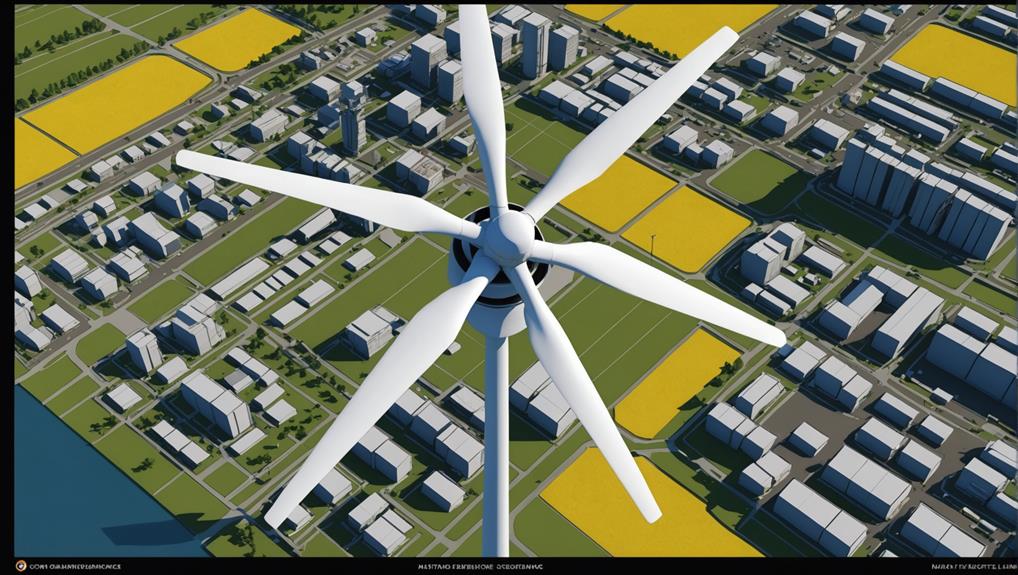Embracing solar energy drives job creation and financial growth, offering cost savings for households and businesses. Government incentives like Solsmart and tax credits amplify economic benefits, fostering employment in manufacturing, installation, and maintenance sectors. Solar panel adoption not only stimulates investments but also generates revenue. The industry's global impact highlights its potential to power millions of households while positively impacting the environment. Discover more about the historical development, financial incentives, job creation, challenges, and future economic outlook related to solar energy.
Key Takeaways
- Solar energy industry drives job creation and financial growth globally.
- Solar power offers significant cost savings for households and businesses.
- Government incentives like Solsmart and tax credits amplify economic benefits.
- Solar energy fosters employment in manufacturing, installation, and maintenance sectors.
- Solar panel adoption stimulates investments and generates revenue.
Overview of Solar Energy Economics
Exploring the economic landscape of solar energy reveals a dynamic and impactful industry that drives job creation and financial growth. Solar power not only offers significant cost savings by reducing energy expenses for households and businesses but also contributes to enhanced financial stability and economic growth.
The creation of government incentives, such as Solsmart and federal tax credits, play an important role in amplifying these economic benefits, encouraging continued investment in the solar industry.
Job creation is a key aspect of the solar energy sector, with the global renewable energy industry employing approximately 13 million individuals, and the U.S. solar industry alone providing hundreds of thousands of jobs. This significant workforce not only supports the industry itself but also creates employment opportunities across various sectors, further boosting economic development.
Historical Development of Solar Panels
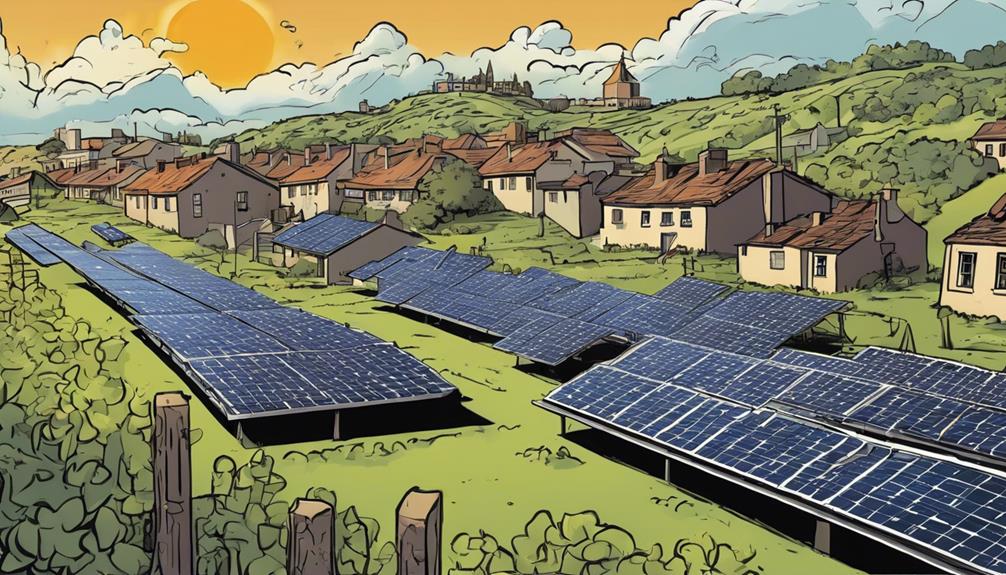
You should know that solar panels have come a long way since their inception in the mid-19th century.
Advancements in the 1950s kickstarted practical developments, leading to improved affordability and efficiency over time.
Understanding this timeline of technological progress is key to appreciating the impact of solar panels on the energy landscape.
Early Solar Panel Origins
Solar panels trace their roots back to the mid-19th century, marking the beginning of their historical development. The early development of solar panels can be attributed to the discovery of the photovoltaic effect by Edmond Becquerel in 1839. This phenomenon, where certain materials generate an electric current when exposed to light, laid the foundation for the creation of solar panels.
However, practical advancements in solar panel technology didn't occur until the 1950s, with the first silicon solar cell being developed by Bell Laboratories in 1954. These early solar panels were expensive and had limited efficiency, but they paved the way for further innovations in the field.
The historical background of solar panels highlights a gradual progression towards more affordable and efficient solar technology. Understanding these origins is essential in appreciating how far solar panels have come and their significant economic impact in today's world.
Technological Advancements Timeline
The historical development of solar panels reveals a timeline of technological advancements that have led to improved affordability, efficiency, and widespread adoption in the industry. Advancements in solar technology have been pivotal in driving the evolution of solar energy towards becoming a competitive source of power. Below is a brief timeline showcasing key developments in solar panels:
| Year | Advancement | Impact |
|---|---|---|
| Mid-19th century | Invention of the solar cell | First practical step towards solar energy |
| 1950s | Silicon solar cells introduced | Increased efficiency and durability |
| 2000s | Thin-film solar panels developed | Enhanced flexibility and cost-effectiveness |
These milestones in solar panels development have significantly contributed to the growth of the solar energy sector, making it a viable and sustainable option for renewable power generation. Understanding this technological progression provides valuable insights into the innovative strides that have shaped the current landscape of solar energy utilization.
Financial Incentives for Solar Adoption
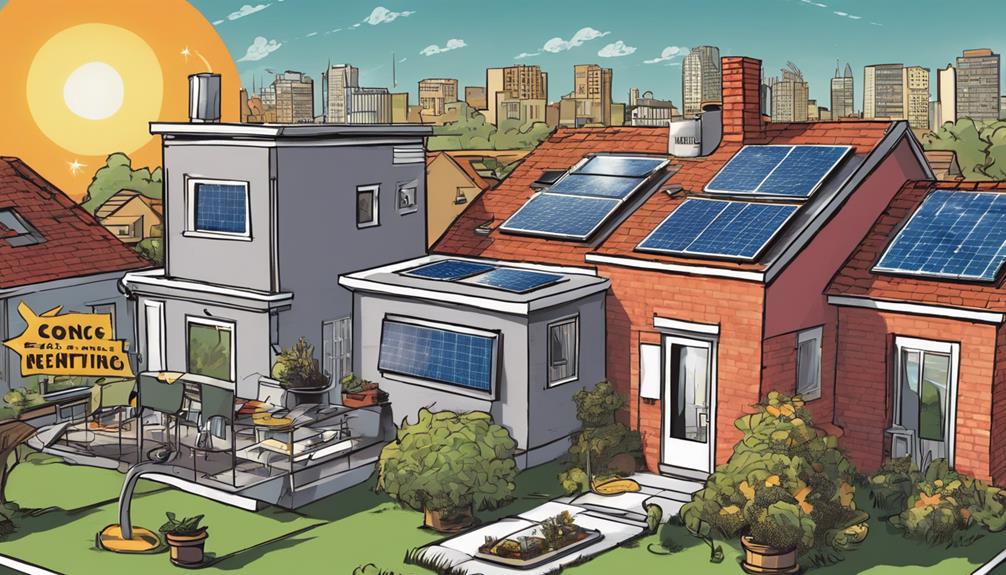
Financial incentives play an essential role in encouraging the adoption of solar energy by providing cost-saving opportunities for homeowners and businesses. Tax Credits and Incentives, such as the Federal Tax Credit and State Tax Credits, offer substantial deductions on the cost of installing solar systems, making them more financially feasible.
Power Purchase Agreements (PPAs) also contribute to solar adoption by allowing homeowners to sell excess solar power back to utility companies, generating additional income.
Net Metering is another significant financial incentive that benefits solar adopters by providing credits on utility bills for surplus energy generated. This not only reduces electricity costs but also promotes the efficient use of renewable energy.
Additionally, Renewable Portfolio Standards (RPS) establish renewable energy generation targets, further incentivizing the adoption of solar power. These financial incentives not only make solar energy more accessible but also contribute to a more sustainable and cost-effective energy ecosystem.
Job Creation and Economic Growth
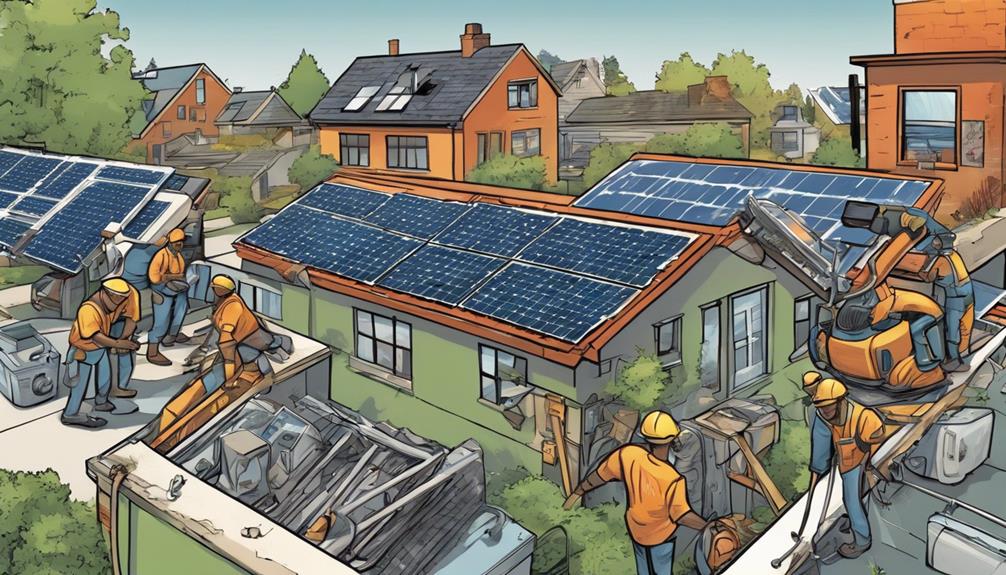
Job creation and economic growth are direct results of the widespread adoption of solar energy technologies. The solar energy industry plays an essential role in fostering job creation across various sectors such as manufacturing, installation, and maintenance.
As the demand for solar installations continues to rise, local economies experience an upsurge in employment opportunities. Additionally, the correlation between solar panel adoption and economic growth is evident, as it stimulates investments and generates substantial revenue streams.
Globally, the solar energy industry has created hundreds of thousands of jobs, contributing significantly to economic activity. The growth of the solar energy sector not only leads to increased job opportunities but also fosters economic development and revenue generation for governments.
Embracing solar energy technologies not only benefits the environment but also acts as a catalyst for job creation and economic prosperity in communities worldwide.
Cost Savings and ROI Analysis
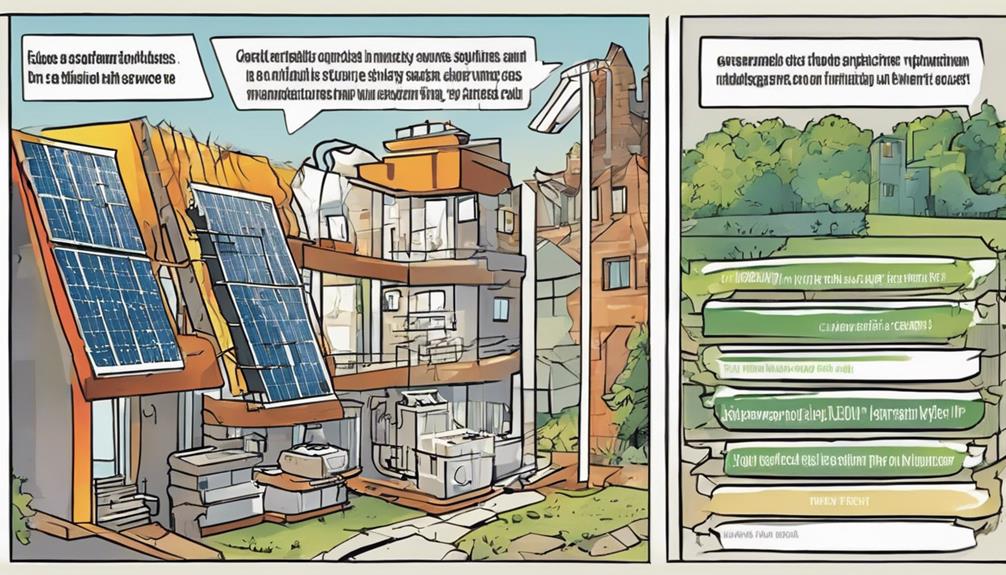
By harnessing solar energy, you can realize substantial cost savings and assess the return on investment (ROI) through various financial strategies.
Solar panels offer significant cost benefits for homeowners by reducing monthly bills and decreasing reliance on the grid. Even with potential grid electricity price increases, long-term savings are attainable, ensuring a strong ROI.
Additionally, financial incentives and tax credits help offset upfront installation costs, making solar energy more financially accessible.
To maximize economic benefits from solar energy, it's vital to understand concepts like net metering and feed-in tariffs. These strategies contribute to overall financial savings, providing immediate and long-term economic advantages.
Property Value Increase With Solar
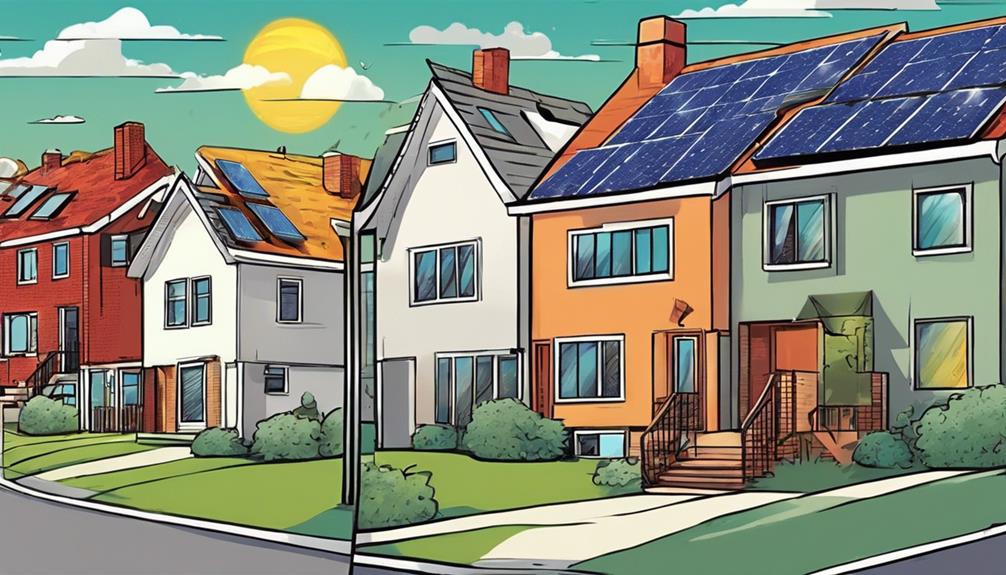
Homes equipped with solar panels often experience a notable increase in property value, averaging between 4% and 5% according to various studies. This boost in property value is attributed to the attractiveness of energy-efficient homes to potential buyers, who are willing to pay a premium for sustainable features. The enhanced property value not only provides homeowners with a tangible return on their investment but also contributes to the overall value of the residential property. By offering energy efficiency and reduced utility costs, solar panels further solidify the appeal of a property. This increased property value not only benefits the current homeowners but also sets a promising foundation for potential future sales.
| Factors Contributing to Property Value Increase | Impact | Importance |
|---|---|---|
| Solar Panels Installation | High | Significant |
| Energy Efficiency | Medium | Important |
| Reduced Utility Costs | High | Significant |
| Environmental Sustainability | Medium | Important |
| Potential for Future Returns | High | Significant |
Environmental Benefits of Solar Energy
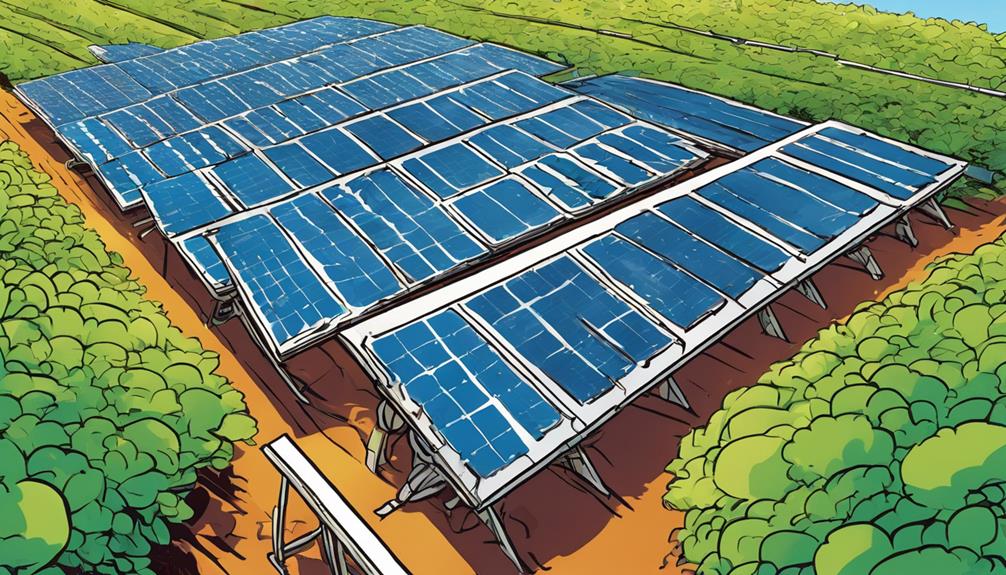
Harnessing solar energy brings about significant environmental advantages, such as reducing greenhouse gas emissions and promoting sustainability. By utilizing solar power, you contribute to the decrease of carbon emissions, which in turn leads to cleaner air and water quality.
Solar energy plays a vital role in mitigating the effects of climate change by decreasing carbon footprints and reliance on fossil fuels. Additionally, solar panels provide a renewable energy source that promotes sustainability and environmental conservation. The long lifespan of solar panels, ranging from 25 to 30 years, ensures a lasting positive impact on the environment.
Not only does solar energy offer environmental benefits, but it also contributes to cost savings and reduced energy expenses for both consumers and businesses. Embracing solar energy not only benefits you economically but also helps in creating a cleaner and more sustainable future for all.
Challenges and Negative Impacts
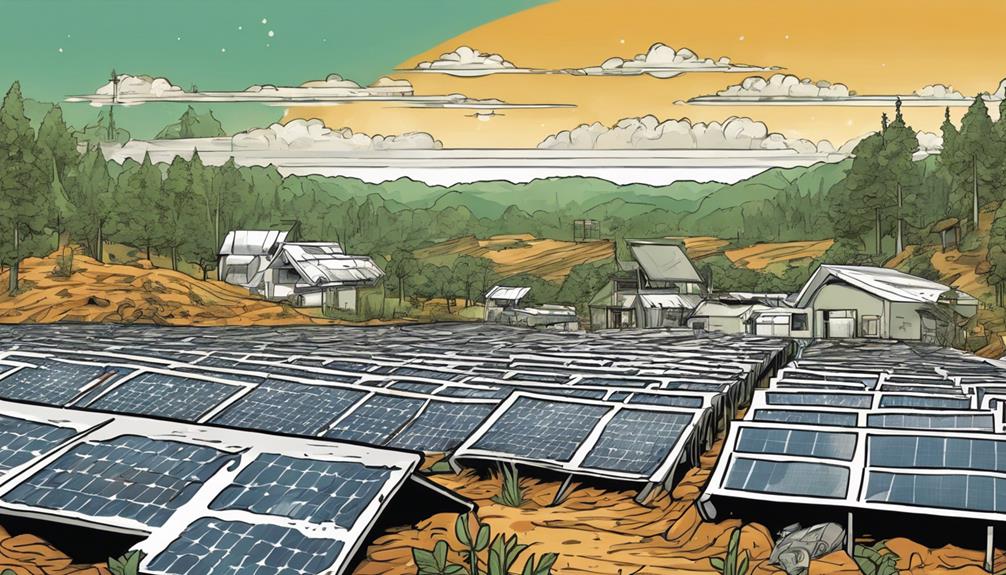
You may face challenges with the initial costs of solar energy installation, which can act as a barrier to adoption.
The impact on land use due to large-scale solar projects might affect available space for other purposes.
Additionally, the shift to solar energy could result in the displacement of workers in traditional energy sectors, necessitating retraining programs.
Initial Installation Costs
The initial setup expenses of solar energy systems pose a significant financial hurdle for many potential adopters. While the upfront costs of setting up solar panels can be substantial, it's crucial to keep in mind the long-term benefits they offer.
The decreasing cost of solar panels has made them more accessible to homeowners and businesses, but the initial investment remains a challenge for some. However, it's essential to mention that the costs of solar can be offset by the significant savings on energy bills over time.
Various financing options, incentives, and tax credits are available to help reduce the upfront expenses associated with setting up solar energy systems. Proper planning and a thorough assessment of installation costs are key to maximizing the economic advantages of shifting to solar energy in the long run.
Land Use Impact
Large-scale solar projects encounter challenges with land use due to the significant space required for installation. The installation of solar panels in agricultural or natural habitats can raise concerns about the impact on land use patterns and ecosystems. Efficient planning plays a pivotal role in mitigating negative effects on land use from solar projects.
Proper siting strategies are essential to minimize disruptions to local habitats and communities. By implementing efficient planning practices, the potential land use impacts of solar energy developments can be reduced. Sustainable deployment of solar energy requires careful consideration of land use management practices and adherence to relevant regulations.
Balancing the need for renewable energy with responsible land use practices is key to ensuring that solar projects contribute positively to the environment and local communities.
Worker Displacement
Worker displacement poses significant challenges and negative impacts in the shift towards solar energy adoption. As the solar energy sector grows, job losses in industries reliant on non-renewable energy production are a reality. Efforts to address worker displacement include retraining programs and job transition initiatives to ensure a just transition to renewable energy sources. These challenges underscore the importance of managing worker displacement for a smooth transition to a sustainable energy economy.
| Challenges | Negative Impacts |
|---|---|
| Job losses in non-renewable industries | Disruption to livelihoods |
| Need for retraining programs | Economic instability |
| Just transition initiatives | Social tensions |
| Ensuring fair employment | Potential unemployment spikes |
| Balancing workforce shifts | Strain on affected communities |
Solar Energy in Global Markets
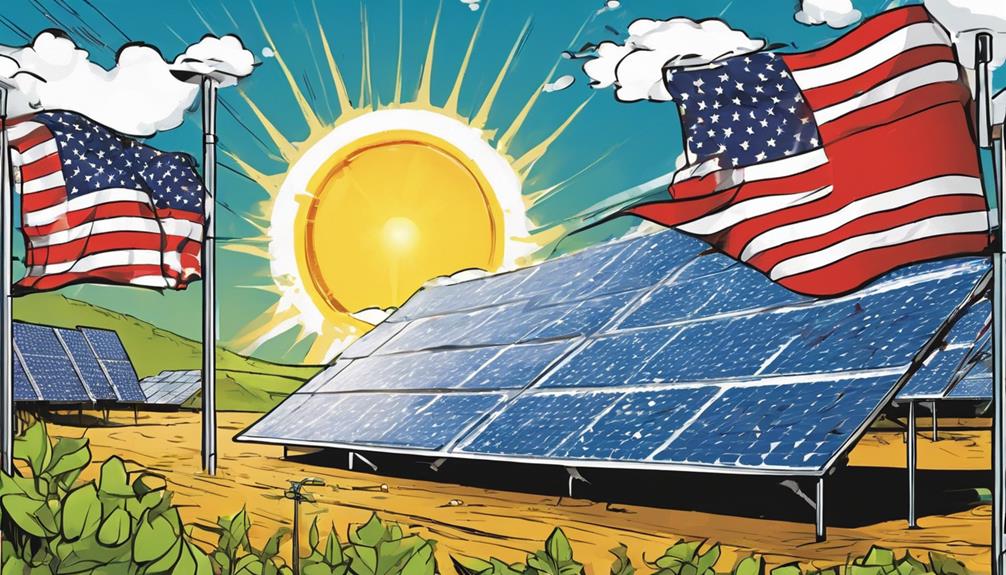
Amidst the shifting landscape of global energy markets, solar power emerges as a key player with its rapid growth and increasing impact on economies worldwide.
The global solar energy market is expanding at a rate of around 24% annually in the United States, showcasing its significant economic impact.
Solar power generation has the potential to supply electricity to approximately 30 million households globally, underlining its role in meeting energy demands.
Additionally, over half of the new electricity capacity added worldwide is attributed to solar energy sources, demonstrating its growing importance in the global energy mix.
Government incentives like Solsmart programs further enhance the economic benefits of adopting solar energy, encouraging its widespread use.
The solar energy industry has already attracted over $36 billion in investments, fueling its rapid expansion and solidifying its position as a crucial player in the global markets.
Future Economic Outlook for Solar
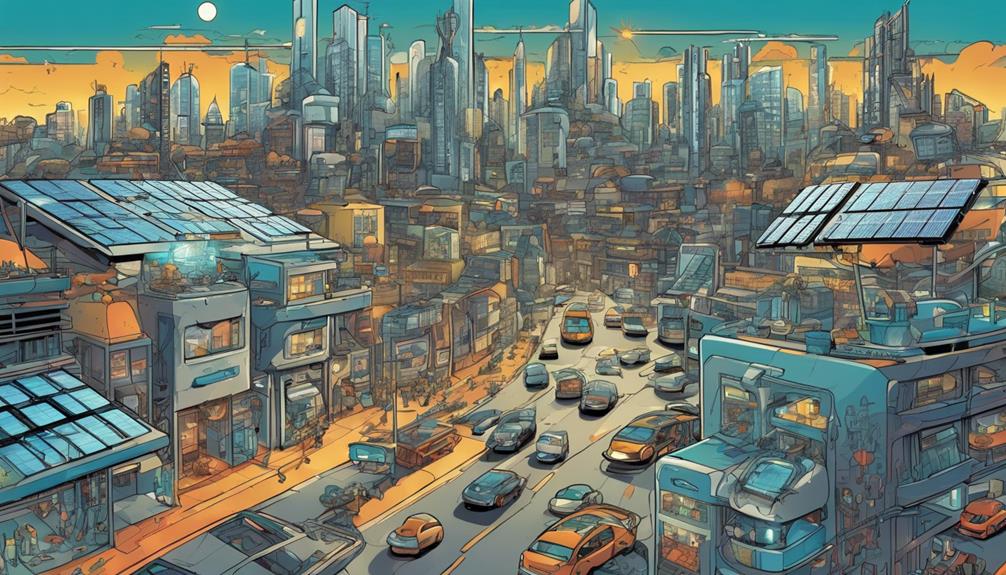
As the solar industry continues its upward trend, the future economic perspective for solar energy remains promising with sustained growth expected in key global markets. With an expected market growth of around 24% year-on-year in the U.S., solar energy is positioned to play a significant role in meeting the world's energy needs. The industry's ability to produce enough power for approximately 30 million homes globally showcases its potential impact on the economy.
Furthermore, government incentives such as the Solsmart program further boost the economic advantages of solar energy adoption, motivating more individuals and businesses to invest in solar technologies. It's notable that over $36 billion has already been invested in the solar energy industry, indicating a positive growth trend.
With more than half of new electricity capacity added originating from solar energy installations, the future looks promising for the solar industry, both concerning sustainability and economic prosperity.
Frequently Asked Questions
How Does Solar Energy Impact the Economy?
Solar energy positively impacts the economy by creating jobs, attracting investments, and lowering energy costs. It stimulates local economies, increases government income, and contributes to financial stability and growth, with long-term benefits for society.
What Are the Economic Impacts of Energy?
Explore energy's economic impacts. It powers communities, fuels growth, and creates jobs. Embrace solar's potential; it slashes costs, ignites development, and boosts stability. Investing now reaps rewards for tomorrow – a bright future awaits.
What Are the Economic Impacts of Solar Energy How Much Does It Cost per Kwh?
Solar energy's economic impact is significant, offering cost savings of $0.08 to $0.10 per kWh compared to traditional grid electricity. It reduces energy costs for households and businesses, providing long-term financial benefits.
What Is the Impact of Renewable Energy on the Economy?
Renewable energy, like solar power, impacts the economy by creating jobs and attracting investments. Did you know that globally, renewable energy has generated over 3.4 million jobs in sectors like manufacturing and installation, contributing to economic growth?
What Are the Economic Benefits of Solar Energy?
Tyson’s solar energy research has shown that the economic benefits of solar energy are significant. It reduces energy bills, creates jobs in the renewable energy sector, and stimulates economic growth. Additionally, solar energy lowers dependence on fossil fuels, leading to cost savings and a cleaner environment.
Conclusion
To sum up, the economic impact of solar energy is like a ray of sunshine, bringing job creation, cost savings, and environmental benefits to communities worldwide.
With financial incentives and a growing market, solar power isn't only a sustainable energy source but also a driver of economic growth.
Embrace the solar revolution and watch your wallet and the planet flourish.





